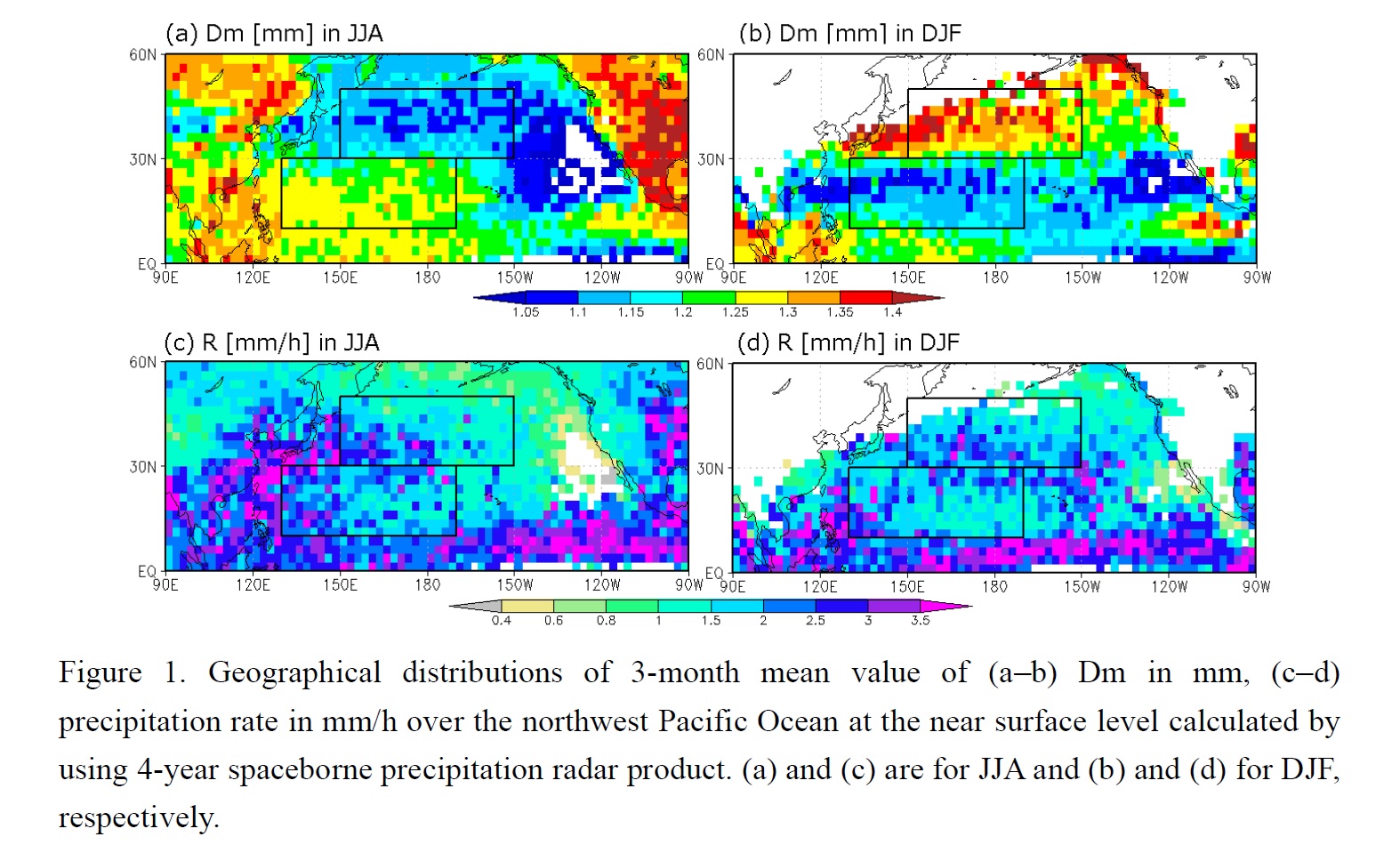Graphical Abstract
Yamaji, M., H. G. Takahashi, T. Kubota, R. Oki, A. Hamada, and Y. N. Takayabu, 2020: 4-year climatology of global drop size distribution and its seasonal variability observed by spaceborne Dual-frequency Precipitation Radar. J. Meteor. Soc. Japan, 98, 755-773.
Special Edition on Global Precipitation Measurement (GPM): 5th Anniversary
https://doi.org/10.2151/jmsj.2020-038
Graphical Abstract
Plain Language Summary:
Global-scale spatial distributions of rainfall drop size (mean diameter; Dm) are newly obtained by using 4-year accumulated products from the spaceborne precipitation radar. Relationship between Dm and precipitation rate is not a simple one-to-one relationship. Focusing on the seasonal variation in Dm over the northwest Pacific Ocean, the results indicate that the variation in Dm is related to the seasonal change of the dominant precipitation systems.
Highlights:
- Over the northern Pacific Ocean, Dm is larger in winter and smaller in summer over the mid-latitude regions and an opposite seasonal variation is seen over subtropical regions; the signals are statistically significant.
- For both subtropical and mid-latitude regions in JJA, precipitation top heights are high and both stratiform and convective precipitation exist, indicating characteristics of organized precipitation systems.
- For DJF over mid latitudes, the stratiform ratio is high but precipitation top heights are not as high as those in JJA, corresponding to the features of extratropical frontal systems.
- For DJF over the subtropics, a feature that precipitation top heights are lowest and convective precipitation is dominant is confirmed, indicating the shallow convective precipitation systems with trade wind cumulus or cumulus congestus.







